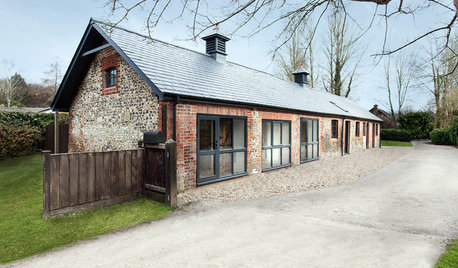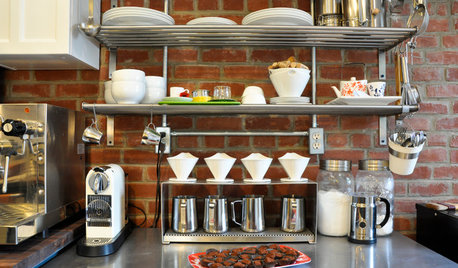Need ideas to germinate old old beans
Just this weekend, my dad gave me a quart jar about 2/3 full of old bean seeds that his mother had saved. She passed away 9 years ago, and I'm not sure how long it had been since she had a garden. My dad got the jar out of his shed, but I don't know where they were kept before that. His sister gave it to him a few years ago.
He told me that she had probably grown these same seeds for 60-70 years. She was 98 when she left this old world.
I would like any and all suggestions of ways to try to get these to germinate. If I could get one, just one, to grow we would be so blessed!
My dad says he 'thinks' they are what they always called 'fall beans'. The seeds are kinda ruddy in color.
Any help would be appreciated. I figure I could try 10 at a time until I get germination or I have total failure. Carolyn, if you're reading this, I would be glad to send some to a bean expert friend of yours (as I'm sure you have many....lol), plus I read where you mentioned it in a old post. Or to anyone that has had great success with old bean seeds.
My aunt had also found a jar of white bean seeds, and they planted them all *sigh* and didn't get any germination. But I'm sure they did nothing except pluck them into the ground. I'm more determined than that!
Thanks in advance for any and all help. It would be wonderful to get ONE fresh bean out of this jar!
Carol B
Comments (36)
galina
16 years agoI was utterly surprised to get a reasonable percentage germinating from beans saved 10 years ago. I had not expected that at all. They were not in the freezer, just in the filing cabinet. Beans stored dry are therefore (sometimes) able to germinate after long time.
On the other hand I had beans of similar age from my mother. I found them in her garden shed, where it is fairly damp, just in their paper packet. Not a single one germinated.
I certainly would not put them directly into the ground, but grow them to the 2 true leaves stage under controlled conditions and then plant out and protect from slugs and birds. I use individual bottle cloches for this.
I wish you the very best of luck with these beans. Hope they haven't been stored too damp.
ctack2
Original Author16 years agoThanks, Galina.....you give me hope! I am alternating between hope and hopelessness with these beans. There are 2 organizations that have offered to take some of the seeds and try to grow them out and develop them for me; Sustainable Mountain Agriculture Center (SMAC) and Appalachian Heirloom Seed Conservancy (AHSC). I am going to try some myself, too. NOT because I even come close to having their expertise, but because I have them and want them. lol. They both have told me that they will keep me posted on the progress (if any) and will supply me with fresh seed this fall if there is success.
I have gotten several ideas on what to try, and will try a few seeds with each idea. Thanks again.
CarolRelated Professionals
Carlisle Landscape Architects & Landscape Designers · Milford Landscape Contractors · Salem Landscape Contractors · Wake Forest Landscape Contractors · El Mirage Landscape Contractors · Fair Oaks Landscape Contractors · Gloucester Landscape Contractors · Laguna Hills Landscape Contractors · Las Vegas Landscape Contractors · Palatine Landscape Contractors · Panama City Beach Landscape Contractors · San Rafael Landscape Contractors · Tustin Landscape Contractors · New Carrollton Landscape Contractors · Hockessin Decks, Patios & Outdoor Enclosuresruthieg__tx
16 years agoPlease keep us posted on the outcome...I know there are lots of stories of finding old seeds from 25 or 50 years ago and having them germinate...Isn't there a story about the Adzuki bean like that....
fusion_power
16 years agoHere is a simple method that is highly successful at germinating old bean seed. It will work if the seed are alive but obviously if they are dead, nothing will help.
Mix 1 teaspoon of miracle grow with 1 gallon of water. Any highly soluble fertilizer with high nitrate will work. Seaweed emulsion in the 5% nitrate range could be used. Use 2 tablespoons of seaweed emulsion because it is less concentrated than miracle grow.
Start seed in a high quality seed mix. It is very important to have air circulation around and through the seed mix. It must be light and highly absorbent. I prefer seed trays because the water can be put in the bottom and will saturate the mix but will not puddle around the seed. Moisten enough mix with the water to fill and lightly pack the tray.
Pour the rest of the gallon of water into the bottom of the tray and let it set for at least an hour. The seed mix should be totally saturated. Pour off enough of the water so the seed tray is only half full.
Now plant the seed. Gently push seed into the mix until just level with the soil. The seed should NOT be covered up. Put the tray in a very warm area, 80 to 85 degrees is just about perfect. They should also be exposed to very bright light. Full sunlight is best but a high quality seed start light will work.
If the seed can grow, it will break the seedcoat within a few days. Because the seed is at the surface, the cotyledons will be exposed to light from the beginning. The seed will send a root down into the mix and start to absorb nutrients. This is the point where you have to watch carefully for weak attachment to the soil. If a seed starts to grow but leans over, put some more seed mix around it to prop it into position until the roots are strong enough to support the plant.
Keep the plants in the tray until the first true leaves have formed, then transplant into prepared soil.
How effective is this? I planted some 8 year old seed this year and got 1% germination in soil. I put some of the same seed in a seed tray and got 60% viable plants. That is a dramatic difference.
Fusion
ctack2
Original Author16 years agoI will keep you all posted.
Through a friend of theirs, Bill Best at the Sustainable Mountain Agriculture Center (SMAC) and Brook Elliott, Managing Director of the Appalachian Heirloom Seed Conservancy (AHSC) have both requested that I send some seeds to them so they can try to germinate them. I will get them out in the mail to them at the end of the week when I'm off work. So, zeedman, I guess I'm going with the professionals. lol.
I will try to germinate what I keep here, not that I can do anything they can't, but just in case there is only one viable seed in the bunch.
Keep your fingers crossed for me!
Thanks for all your ideas, too.
Carol BMacmex
16 years agoYou never know. I have a jar of seed I brought back from Mexico. The seed was purchased in a market in 1997 and I did a germination test on it last fall. I used 11 seeds and had 100% germination! The bottle has been kept sealed and in my closet.
George
Tahlequah, OKzeedman Zone 5 Wisconsin
16 years ago>"How effective is this? I planted some 8 year old seed this year and got 1% germination in soil. I put some of the same seed in a seed tray and got 60% viable plants. That is a dramatic difference."I was able to duplicate those results this month, with a rare yardlong bean ("Long White Snake") that last year had 0% germination out of 50 seeds. Fortunately, I still had a good quantity of seed remaining. This year, I planted them in a sterile soil-less mix in Jiffy strips as I did last year, but with two changes:
(1) After planting, they were watered by bottom-soaking with a solution of liquid fertilizer & boiled rain water, in the proportions listed by Fusion; and
(2) The tray was placed in a lighted, temperature-controlled germinator set at 75-80 degrees F. (as opposed to a solar greenhouse last year).The difference is remarkable. Thus far, over 30 of 50 have germinated - and more are still emerging. This from seed that was shriveled, cracked, and appeared to have been harvested immature. The source has since dropped this variety, so I now have real hope of salvaging it. Should it prove too difficult for my climate, I still have enough seed to send to a serious collector further South.
As to old bean seed... I planted a runner bean this year that I last grew in 1998. It was planted directly in the garden in late May. The germination rate was nearly 80%! The seed had been stored in a zip-lock bag in a filing cabinet... so much for the myth of zip-locks killing seed.
Carol, could you update us on the results of your efforts so far?
ctack2
Original Author16 years agoNo progress so far. The seeds are being delivered to SMAC this weekend. AHSC had no room for grow-out if germination was successful this year, so they have put theirs in the freezer for next spring.
Zeedman, what is this germinator you are talking about? Are they reasonably priced and where could I get one? Got room enough to try some of these for me? lol
My heat mat burned out, so I've been afraid to try the seeds I have left until I get it replaced. I would HATE to get germination, but then kill the plant before I got it big enough to put outside. I'm just a big chicken I guess when it comes to something this important.
I put in a request on FreeCycle today for a waterbed heater and if I get one, I'll use that as a heat mat.
Carol Bctack2
Original Author16 years agoFusion,
Using your method, do the seeds need to be kept covered for moisture, like you do when starting tomatoes or peppers? Since part of the bean will be showing at the top of the soil, does it matter if it dries out on top or do I need to keep a clear cover (like saran wrap) on top of it to hold moisture in?
The reason I'm asking, is that I have a place outside that I could put trays and they would be in the outside light, but in a shaded area until the evening hours. I could put something out there that would shade them even then if I needed to. The temps here are in the 90's now - so they would be warm enough for sure. Or would that be too warm? I just don't have a place inside that is warm enough, but I'm afraid that outside they would dry out too quickly, even though I would check the water level in the tray frequently, I'm worried about the tops of the actual seed getting too dry.
Aslo, what is the rootball size? Could I plant these in containers instead of the garden if I did get germination? Just for this year until I get new good seed to plant for next year.
Thank you EVERYONE for your help and your good wishes.
Carol Bfusion_power
16 years agoCarol,
The seed tray should be half full of water when you put the seed in. That should be enough to prevent evaporation for at least 2 or maybe 3 days. I would not cover the top because the seed seem to prefer exposure to the air. If you are very worried about the surface drying, I would start the tray indoors for the first 3 days. They put it out in the sun. The seed will not do anything until they have absorbed enough water. Then they will grow if they are viable.
Fusion
zeedman Zone 5 Wisconsin
16 years agoI agree with Fusion regarding the covering of the seed container. At warm temperatures, the dead seeds will rot very quickly; and with the high humidity of an enclosed environment, fungus could quickly engulf any good seeds (I say this from experience).
Carol, my germinator is home-made. I converted a "Germinette" collapsible greenhouse, which I covered outside with space blankets & moving blankets for heat retention. The unit came with 6 full-length shelves, under which I mounted shoplight flourescents on chains. These are turned on & off by a timer.
The temperature is regulated by a small electric heater, hooked up to an adjustable thermostat (the type used for electric baseboard heaters). This type of thermostat will not handle the inductance of large motors, so the heater plugged into it must have no fan, or a very small one (I used a Patton, which has a very weak blower). Some basic electrical knowledge is required to wire the connections.
(A sealed greenhouse thermostat is more reliable under high humidity, but much more costly (and harder to find) than the baseboard thermostat.)
To regulate the temperature effectively, the unit must be placed in a moderately cool location (basement or garage), the heat from the lights will cause over-heating indoors. You might be able to use it indoors with the use of controlled venting (to conserve energy), but I have not tried it.
This setup will control the temperature within a 3-4 degree range of the setting. I set mine to 75 degrees to germinate most vegetables, it would get closer to 80 with all lights running, then drop down at night to just below 75. Once germination is completed, I either lower the temperature to 70 (for tomatoes, peppers, and eggplant) or move the seedlings to a solar greenhouse.
For the small lots of seed that I receive through swaps, sometimes every seed counts. The germinator has given me a very high germination rate for beans, often 100%. The final rate for the beans I mentioned previously was 84% (after 0% last year).
My plots are fully planted, so I would also be unable to grow your beans this year. Besides, at this point it may be too late in the season to guarantee a successful seed crop here (or in your location?), so it could be a waste of seed to try. If you still have seed remaining next year, I could try to germinate some of them for you then... just contact me through my member page.
nightbloomincereus 7A noVA
16 years agoYes, I'm guilty of ressurecting an old thread. :-)
ctack, did you ever have any luck getting your old beans to grow and reach maturity? Did any of the people you sent them to have any luck? I'm in suspense and reading too many old posts!
zeedman, did "long white snake" ever reach maturity?
zeedman Zone 5 Wisconsin
16 years agoCarol, I too am interested in the outcome from last year. Was anyone able to germinate your beans successfully? If not, or if they were unable to get seed, I might be able to help this year; contact me through my member page if interested.
N.B.C., the "Long white snake" yardlong proved to be daylength-sensitive, the second tropical yardlong that I have grown with that trait. The growth was lush - much more rampant than the other 4 pole yardlongs I grew - but blossoming did not begin until September, and then sparsely. I was able to harvest a small amount of seed, but it was of the same inferior quality as the original seed. Either this trait is inherent to the variety, or it is a response to cultivation outside its native environment (which I believe is the most likely explanation). It may require heat (especially high night temps) and high humidity to mature properly.
I still have seed remaining; but it is weak, and requires the procedures outlined in this thread to obtain good germination. Provided that I can find serious seed savers in long season areas (such as California or the Gulf Coast), I have enough seed to send out 2-3 samples.
The other variety I referred to is a purple-podded variety from the Philippines, for which I am the sole source. This one produces strong seed - mine is over 12 years old, and still has fair germination even without special treatment. It has 24" burgundy/purple pods of crisp texture & outstanding flavor, and will perform well for those in sub-tropical areas. I grew it for many years when I lived in San Diego.
Like Carol's beans, both these yardlongs are in need of rescue - so I hope that I can find someone willing to save them for posterity.
belindach
16 years agoI haven't tried growing yardlongs and would be interested. I'm in the south and they should do well for me. Are they eaten as a pod or shelled?
zeedman Zone 5 Wisconsin
16 years agoBelindach, yardlongs are basically climbing cowpeas, that have been bred for long, tender pods. They thrive in hot, humid climates where many pole beans struggle... in the tropics, they are one of several beans used in ways similar to snap beans.
Ideally, the person(s) to whom I send this seed will have some skill in seed saving, and be willing to share that seed with others. There may be no remaining sources for these varieties... and my supply is very limited. Where I live now, I am unable to grow them, so the seed will soon die in storage. I need to be sure that any of these seeds that I send out, go to experienced hands.
magnolias4ever
16 years agoZeedman -- I am in zone 8B (Gulf Coast of Alabama). I'm by no means a pro at saving seeds though. I have tried my hand at saving a couple of bean seeds once with success and I love saving tomato seeds (frementation process). I would be willing to try for you in my square foot garden. I don't know how many seeds you have, but if you could send me one or two I would give it a shot... but if you'd rather a more experienced seed saver than myself or someone further south like in Florida, I definitely understand.
Judy
deanriowa
15 years agoI am going to try myself to get beans from 2000 started.
I read on another site that soaking beans in room temperature water for 24 hours helps. Is this true?
What about soaking and then coating with a Miracle Grow rooting solution?
I might try as well, the use of "potassium nitrate", where or what form can I buy that product?
thanks,
Dean
jimster
15 years agoMost soluble fertilizers such as Miracle Grow contain potassium nitrate. Check the label. I have never attempted to germinate old seed, but my understanding is that just a tiny amount of nitrate in the water will help.
Soaking bean seeds in water is not recommended.
Jim
zeedman Zone 5 Wisconsin
15 years ago"Soaking bean seeds in water is not recommended."
I agree. Nor would I recommend the use of rooting preparations to germinate seed, unless you have researched their contents.
The exception is the method mentioned earlier in the thread, with the nitrate solution used to soak seeds in pots. This has demonstrated its worth for both Fusion & myself. Note that the nitrate is a weak solution, only one tsp. per gallon. As Jimster pointed out, you can use the MG liquid (or any other concentrated liquid fertilizer) in place of the potassium nitrate, since that chemical can be hard to come by due to its pyrotechnic applications.
The only other chemical that can be useful for hard-to-germinate seeds is the gibberellic acid I mentioned earlier. It may be useful for beans, although I have not tried it, since the nitrate treatment is so effective. GA's best use is to germinate dormant seeds, and few vegetable seeds enter true dormancy. There are a few places that offer it, but I would not recommend its use to those without at least some chemical or scientific background.
zeedman Zone 5 Wisconsin
15 years agoWhile looking this up for another thread, I realize that we never had a follow-up from the original poster. When we last heard, several others had received the seed, and were trying to germinate it. To the best of my knowledge, the AHSC has since been dissolved. Bill Best, however, is still around - any results?
If any of the seed is still available, I would be happy to try to revive it. Carol, you out there?
Has anyone else has tried to germinate old bean seed? I would be interested in your observations.
ctack2
Original Author15 years agoZeedman,
I am still here, and there is still some seed left. I never heard from anyone except for a message from someone (don't remember which) that the seeds just swelled up, but no germination.
I would be glad to send some of these to you and let you try your luck. It would be wonderful if something came out of this jar!
You can email me through GW or privately.
Thanks
Carol Bctack2
Original Author15 years agoYes, I'm here and yes, there are some seeds left. The only feedback I got was a message from one person that said the seeds just swelled up, no germination. And that message got to me by word of mouth.
I would be glad to send some of the seed your way. Email me through GW or privately and we can work something out. I would love to get something out of this jar!!
Thanks,
Carol Blazyhat
15 years agoHave a you tried a hotmat?
I had some Oldish black beans, about 5 years old that I grew from 1998 - 2004. I had only about 13 beans and they just rotted and swelled up. Nada. I had 1 bean left which I found the floor, luckily I dropped this thing, and found it later because I got one those
Greenhouse heat mats with those domes and peat pellets that I'm germinating my Tom's with, I stuck the bean in there too, but what do you know, the bean sprouted just today after 2 days.zeedman Zone 5 Wisconsin
15 years agoCarol (ctack2), I sent you an email through your GW member page... did you receive it?
jmsimpson9
15 years agozeedman,
I think somethings happened. Shes not answering my direct emails either.
matthias_lang
5 years agoI'm resurrecting this old thread because of the fantastic (!) info herein. Hoping that the smart people here can help me out with some advice. I have a favorite bean, Helda, that gives me considerably poorer germination when the seed is merely one season past ideal. The seed I have now was for the 2016 season, so I thought I'd try the nitrate and shallow planting technique.
I do not have Miracle Grow, but I have a soluble 24-8-16 that has 1.2% nitrate nitrogen. Is that comparable to Miracle Grow? I was thinking MG was not that much total nitrogen. Should I forgo the fertilizer I have and just go buy some MG?
zeedman Zone 5 Wisconsin
5 years agoNo need to buy MG; the nitrogen content itself is not that critical, since it will be diluted to a weak concentration. The product you have should suffice. Be sure to dilute it though, with the comments in this thread as guidelines.
matthias_lang
5 years agoDilute it, absolutely. Thanks. I have to get this started tonight. Very excited to try.
Do you know, zeedman, by what mechanism this works?
matthias_lang
5 years agoThought I'd report back on germinating beans with a nitrate solution. (Only a third [8/24] of my beans planted in ground earlier in May had germinated). In the cell pack with Miracle Grow I planted 72 beans. Thirty one germinated, so 43%. The cells were too small, so that a couple of beans got their roots growing over the stem, so that they could not get up out of the soil. Pretty weird to see a bean with true leaves trapped in the pro-mix, coiled twice,yet not able to escape the roots. Those roots were partly above the soil.
Also, some beans came up with oddly thin stems. (That was the case in the garden as well.) Quite a few had trouble completely splitting their seed coats even after their were well above the soil, so I gave them a little help with that.
Tonight I planted out as many as I could. Will be interesting to see how many survive transplant. I left the weaklings in the cell packs to see if they will develop any more.
I still need to plant out a lot more but I'm going to move on to my seed purchased for 2018. Got to get them in pronto.
Macmex
3 years agolast modified: 3 years agoI had completely forgotten this thread. This year I received an old packet of bean seed and wanted to try and get something from it to grow. Here's a link to a thread, describing my odyssey. I did get two to grow!
Reviving old seed/ Cherokee Striped Cornhill Pole Bean
Matthias, I'd sure like to hear how it went for you!matthias_lang
3 years agoMacmex, I felt a little confused about this because my bean germinating effort seems so long ago. Was it really just last year as the time stamps on my post indicate? Well, all in all I guess I'd have to say the results were satisfying because we did get enough beans to can. But I did plant some fresh seed, too.
If I can find the garden space I may end up trying this technique on some yardlong beans this year. Got a jar of them sitting on my dresser for years. If I can't get them to germinate, I'll have to shift the jar to the kitchen and put them in soup.Macmex
3 years agoMy experience with yardlong beans is that they maintain vitality MUCH longer than regular beans. Hopefully they grow for you!
zeedman Zone 5 Wisconsin
3 years agoMy experience with yardlong beans echoes that expressed by Macmex. Provided the seeds were healthy to begin with & properly stored, they will remain viable for a surprisingly long time. One that I had saved before I moved was not planted again for 11 years, and still had over 50% germination.
For me, as a collector, pretty much every year is an experiment in seed longevity. This year I'm starting some squash seeds from 2009, and a soybean from 2010. Those are being started as transplants, using old seed protocols.
Due to several years of bad weather & health issues, I am way behind in my maintenance grow outs, so much of my seed is in need of renewal. 18 other varieties of various vegetables will be from seed last grown in 2012, they too will be started as transplants. Weather permitting (the "big if") it's going to be a busy year.
Macmex
3 years agoConditions where seed were stored has much to do with how long they're good. We live in an extreme climate, sometimes going for over a month without dropping below the mid 80s and topping 100 F every day. We hardly use AC, so my seeds are exposed to heat and humidity, so they don't last as long as they otherwise might. Still, my long bean seed was good for over 10 years, even under those conditions.
















zeedman Zone 5 Wisconsin